
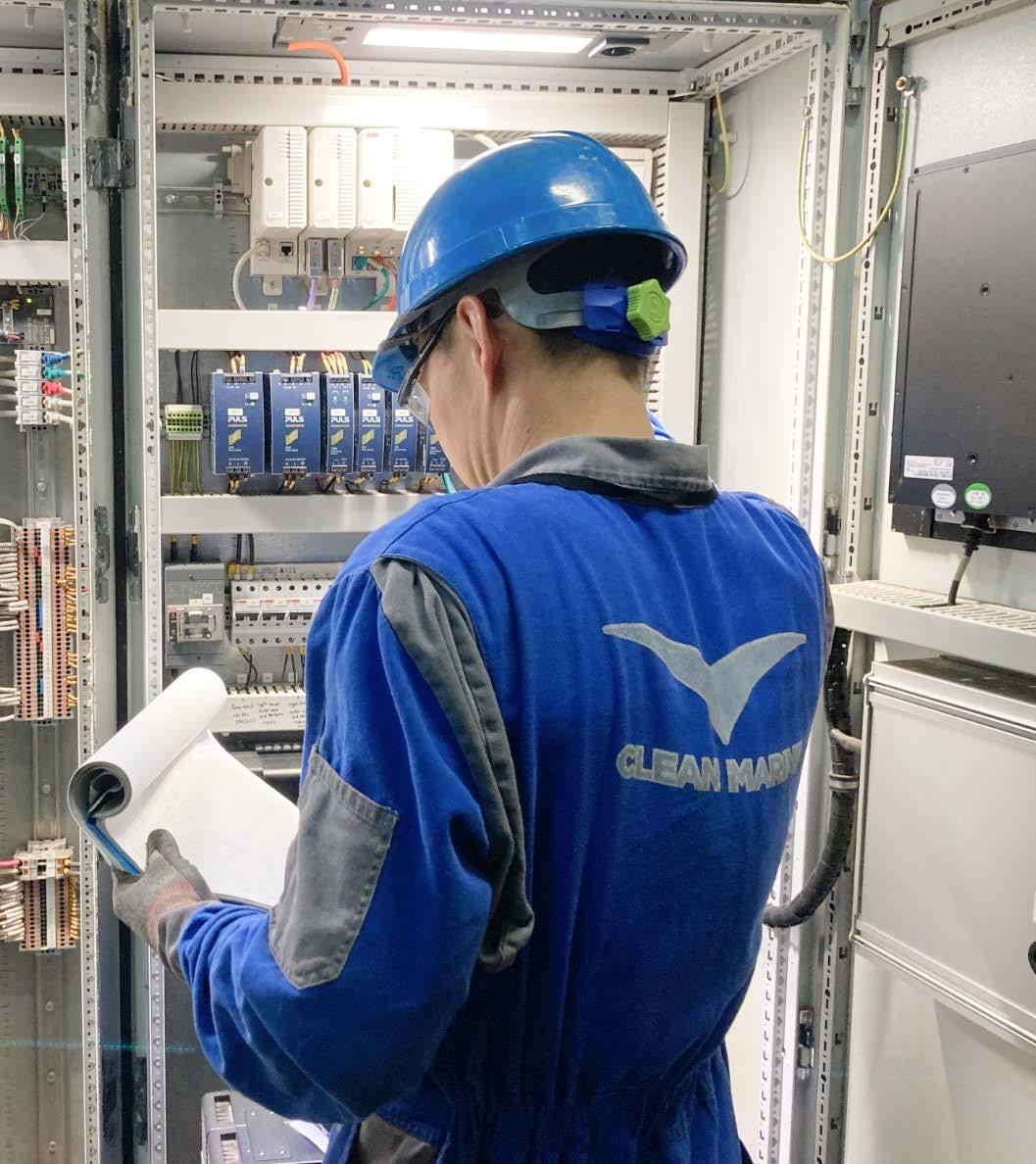
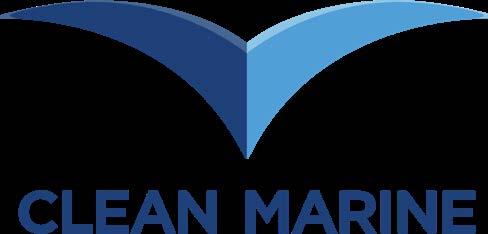
Short installation times and significant fuel savings make air lubrication systems and Exhaust Gas Cleaning System (EGCS) attractive investments for shipowners. Report by Clean Marine.
Shipowners are facing an unprecedented challenge to reduce the carbon footprint of their fleets. With the pressure to cut carbon growing, the question of how to achieve cleaner operations is more urgent than ever.
Fuel-related emissions remain a primary concern for shipowners, but the current marine fuels landscape is riddled with uncertainty. Many of the alternative fuel options on the market are prohibitively expensive, complex to implement, or require new engine technologies that shipping companies are not ready to adopt overnight. Green hydrogen and green ammonia, while promising, are not yet available at scale. As a result, many owners are seeking solutions that can be applied to their existing ships immediately –solutions that are cost-effective and do not necessitate major structural changes.
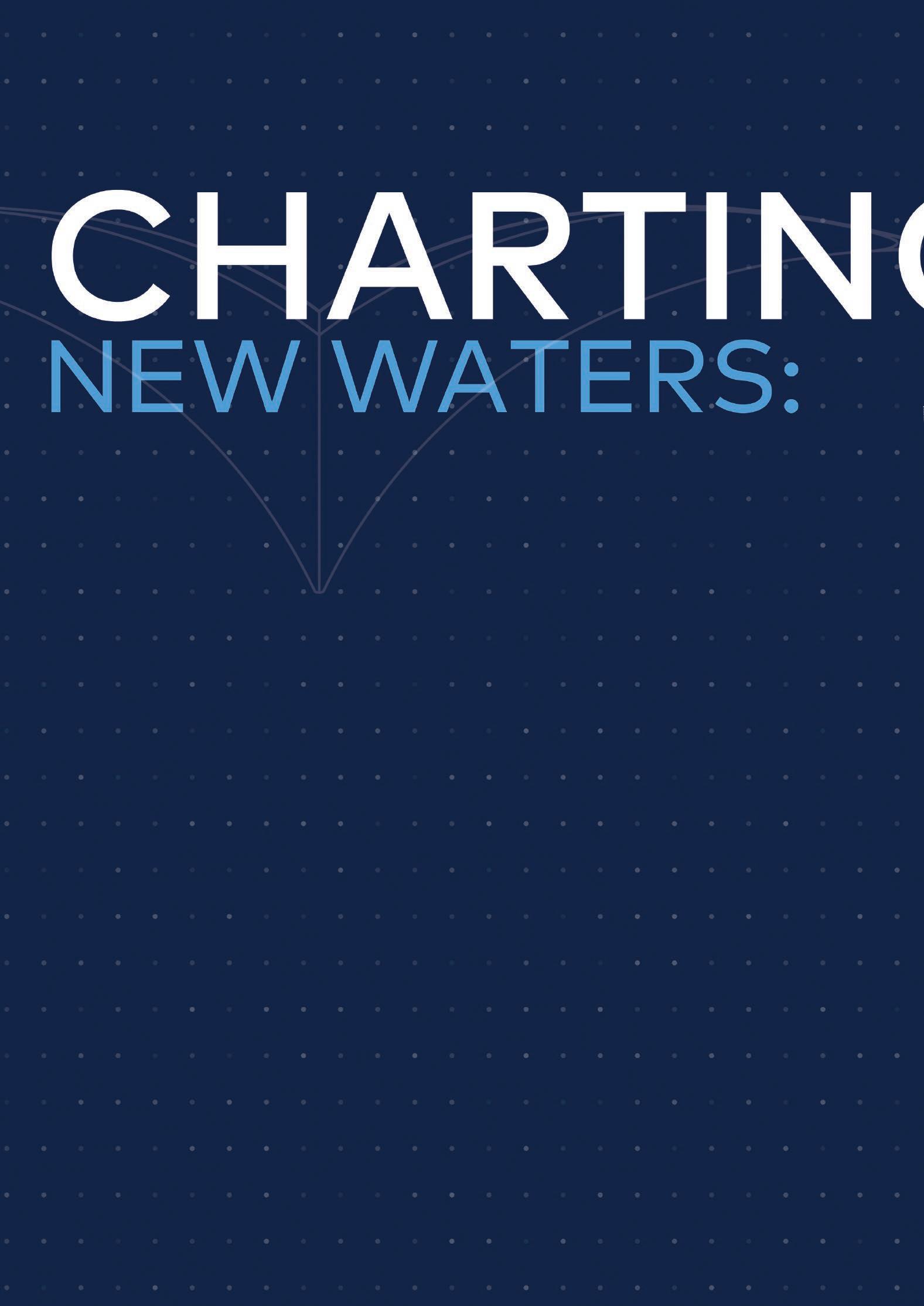
Clean Marine, a long-standing manufacturer of marine technologies, has been helping the maritime industry navigate emission reduction challenges for over two decades. Initially known for its exhaust gas cleaning systems (EGCS), Clean Marine has expanded its product portfolio in recent years, staying ahead of the curve in response to industry demands and the evolving regulatory framework.
Immediate compliance
Since 2004, Clean Marine has been at the forefront of EGCS technology, providing shipowners with an immediate solution to comply with International Maritime Organization (IMO) regulations on sulphur emissions.
Today, the company has installed more than 300 EGCS, designed to remove 99.9%
of sulphur from ship exhaust gases. These systems ensure compliance with the IMO’s 0.1% sulphur cap in Emission Control Areas (ECAs), which will expand in May 2025 with the inclusion of the Mediterranean Sea as a new ECA.
European gasoil-fuel oil forward price spreads are wider for the third quarter, according to Freight Investor Services. The ICE Gasoil-VLSFO forward spread has gone up to $191/mt, and the ICE Gasoil-HSFO spread to $256/mt. This is a clear indication that the market expects LSMGO to become costlier relative to VLSFO and HSFO after the Mediterranean ECA has been implemented. By installing EGCS, ships sailing in the Mediterranean ECA can avoid these extra fuel costs by continuing to consume HSFO instead of switching to costlier LSMGO.

HSFO-fuelled ships in operation today already use Clean Marine’s exhaust gas cleaning systems to filter the sulphur oxide levels in their exhaust gas down below the compliant 0.10% limit in ECAs.
“We have always pushed ourselves to meet or exceed regulatory standards, preparing for future challenges as much as addressing current ones,” said Nicholas Macleod of Clean Marine.
One of Clean Marine’s key innovations was transitioning from super duplex steel to 254 SMO grade steel for its EGCS in 2018, improving both the durability and environmental footprint of its systems. As a result, the company now offers a fiveyear structural warranty on all installations, giving shipowners added confidence in their investments.
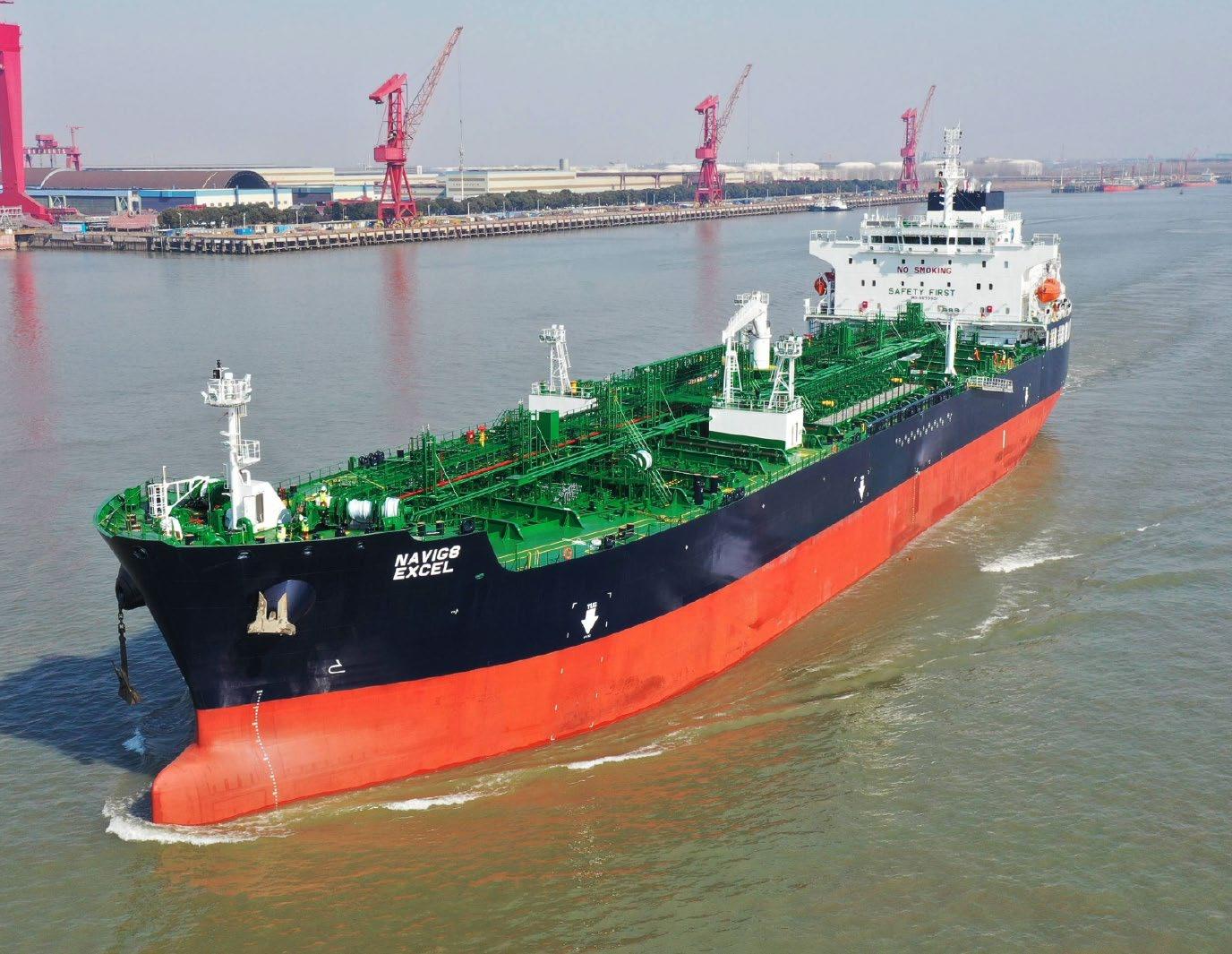
Decarbonisation technologies
While EGCS remain a cornerstone of Clean Marine’s product line, the company has significantly broadened its portfolio. Recognising the growing need for decarbonisation solutions that don’t rely solely on fuels, Clean Marine has developed an Air Lubrication System (ALS) – technology aimed at reducing frictional drag between a vessel’s hull and the water.
Air lubrication has long been considered a promising way to improve fuel efficiency, and Clean Marine’s system stands out because, unlike other ALSs on the market, it can be adapted. In partnership with Pascal Technologies, a specialist in hydrodynamics, naval architecture and control systems engineering, the Clean

Marine ALS is designed to dynamically adjust to a vessel’s operating conditions – such as wind, current, and draught – to optimise the system's effectiveness and maximise energy savings.
“The adaptive ALS we have developed can be applied across different ship types, from tankers, bulkers, cruise ships and containerships, and can fine-tune itself in real-time,” says Macleod, ensuring notable KW savings.
These savings are more than theoretical.
Six ALS systems have already been installed on vessels operated by Navig8, one of the world’s leading ship management companies, demonstrating the growing trust shipowners are placing in this technology.
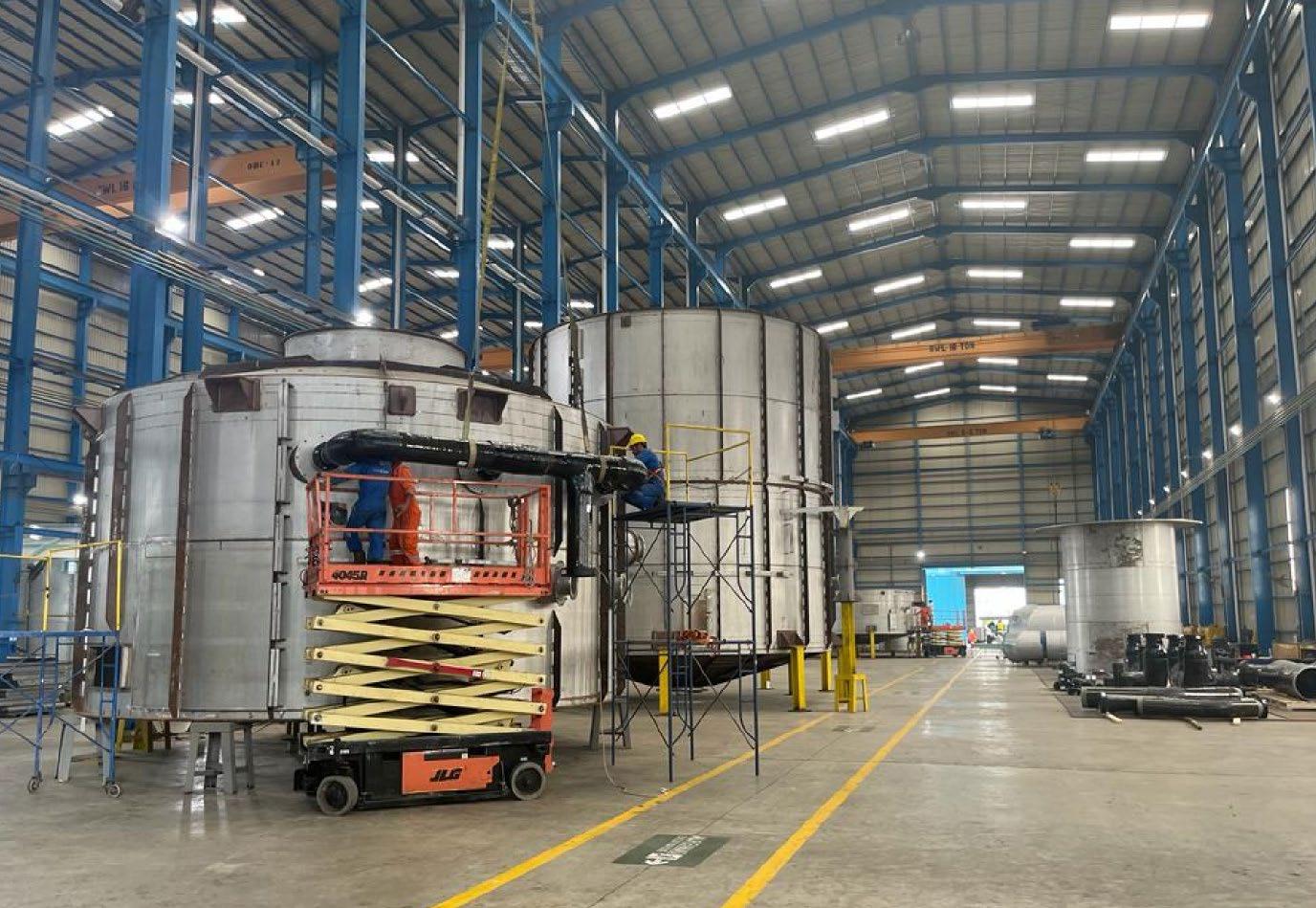

Charterers increasingly consider ships with lower fuel costs and lighter carbon footprints more attractive prospects, so installing ALS will make ships stand out positively in the global fleet. ALS can also improve Carbon Intensity Indicator ratings, which measure CO2 emitted per cargo tonne mile and are becoming stricter every year. Feasibility calculations on expected net KW gain for any ship type can be completed by Clean Marine upon request.
“Installation can be completed within ten days, meaning minimal downtime for ship operators,” Macleod added.
Ready for future compliance
Clean Marine continues to innovate by actively developing a range of additional solutions to help shipowners reduce emissions. Among these is its rotor sail technology, which relies
on wind propulsion to provide an alternative source of thrust. With the technology currently undergoing extensive land-based testing, the company’s rotor sails are one step closer to going to market.
Additionally, the research and development team is working on a carbon capture system. Although still in its nascent phase, this technology represents a key part of Clean Marine’s future strategy.
“Our aim is to offer a full suite of solutions, enabling our customers to meet not only current regulations, but also future CO2 reduction targets,” said Macleod.
The European Union’s Emissions Trading System (EU ETS) provides commercial incentives for ALS, onboard carbon capture and rotor sails by allowing shipowners to reduce their CO2 emission liabilities. Under the EU ETS, shipping companies must purchase
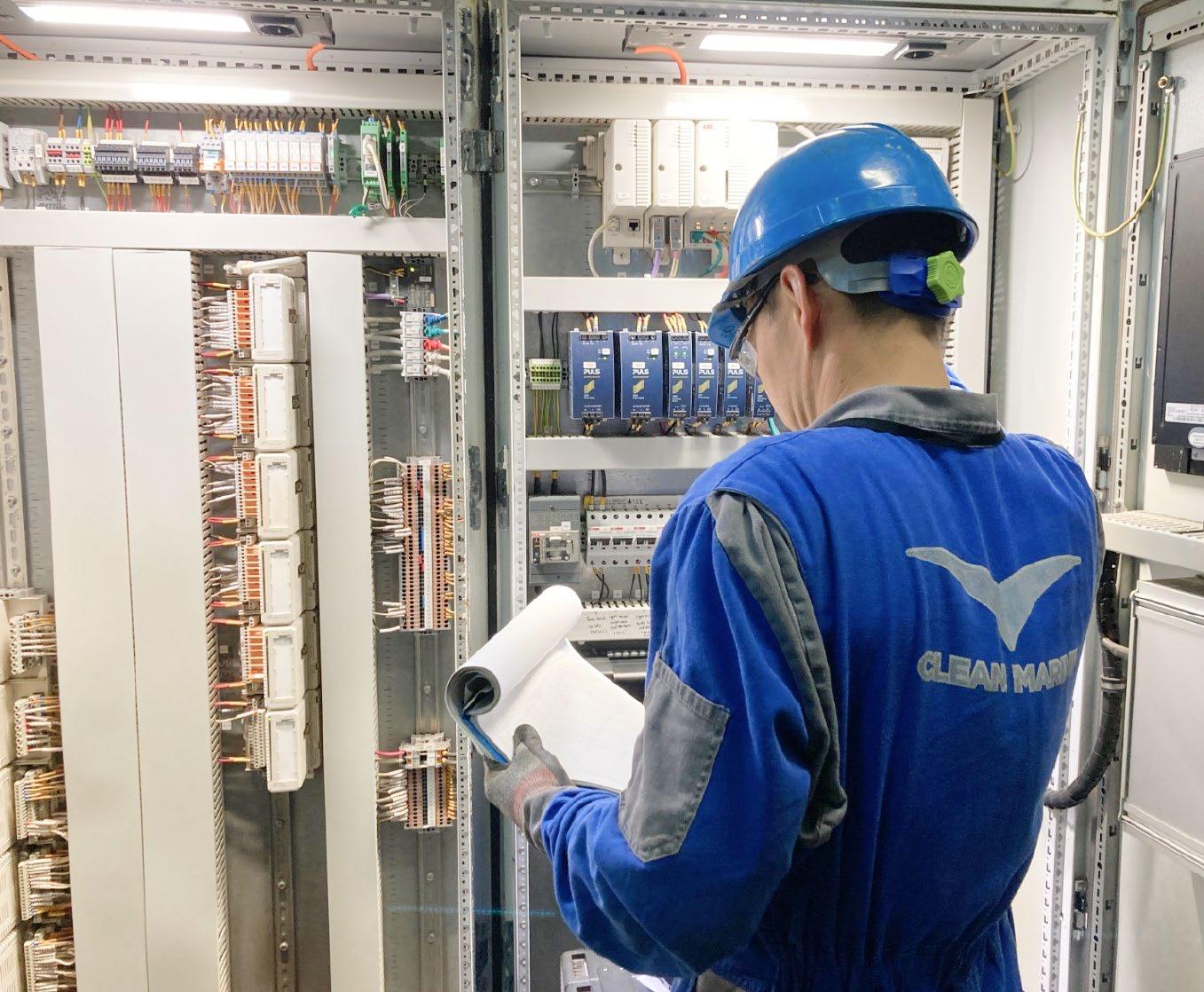
allowances for their emissions, and carbon capture can help lower the amount of CO2 released, reducing the number of allowances a ship needs to buy. This creates a direct cost-saving mechanism for shipowners who invest in ALS, carbon capture and rotor sail technologies, as capturing CO2 means fewer emissions to account for.
A trusted global partner
Throughout its expansion, Clean Marine has remained a trusted partner for shipowners around the world. With certifications from all major class societies and an extensive global service network, the company is well-positioned to support its customers in this new era of decarbonisation.

Unlike many of its competitors, Clean Marine can provide in-house servicing, reducing costs and turnaround times for its clients.
“Other companies might need to outsource servicing, but we have the global reach and capability to offer a seamless service experience,” Macleod pointed out.
This is particularly valuable as downtime becomes increasingly expensive for shipowners.
Vision for the future
Looking ahead, the company is keen to be recognised not just as an EGCS provider, but as a leading player in marine technology.
“We’ve come a long way from just being a EGCS company,” said Macleod. “Our goal

is to be seen as a world-class marine tech company with a comprehensive range of solutions that can help shipowners meet their decarbonisation goals.
“The shipping industry is facing significant change, and we are determined to be part of that transformation.”
As the maritime sector braces for stricter environmental regulations, Clean Marine’s combination of proven technology and forward-thinking innovation offers shipowners a practical, scalable way to navigate these challenges. n
For more information email post@cleanmarine.no or visit cleanmarine.no

Clean Marine in Numbers
40,000sqm state-of-the-art facility in Batam, Indonesia
125 strong manufacturing workforce
90% of global aftersales repairs carried out on the spot
300+ EGCS in operation
6 ALS on the water

